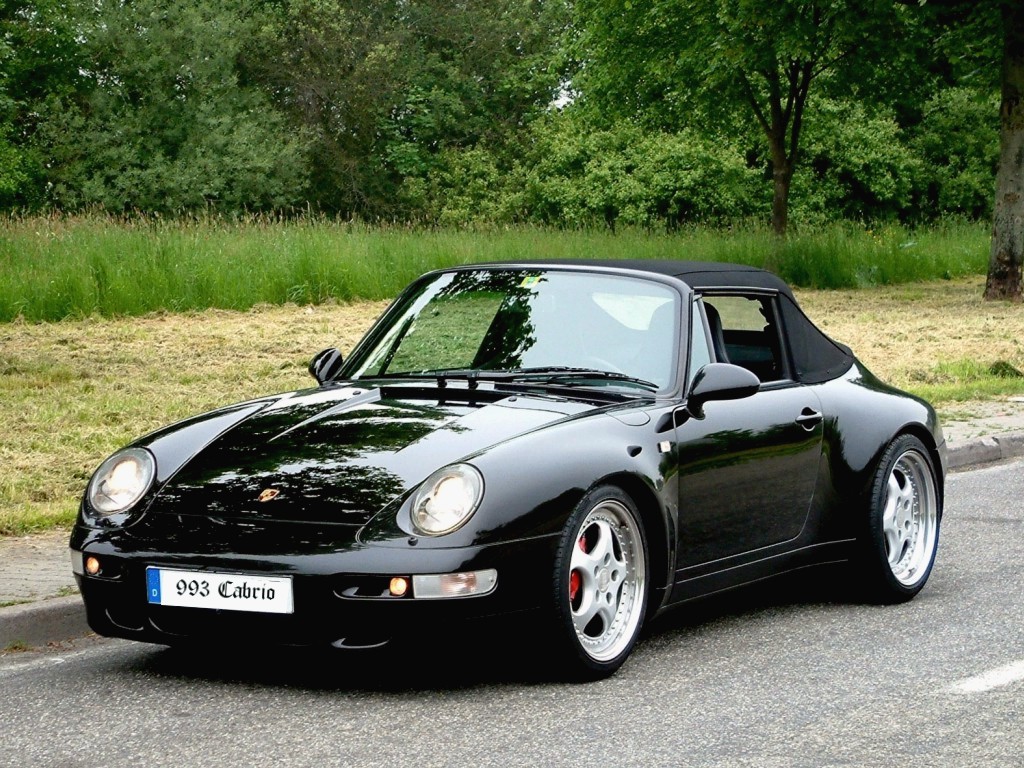Porsche 993 Historical Overview
The Porsche 993 (911) was superseded by the 996 in late 1998, the production of the 993 was between 1993 and early 1998; actual models are 1994 through to 1998. The number 993 refers to the company’s internal name for this particular version of the 911.
As is the case with all 911 models, there were several different styles of the 993. The various trims differed in driver train, body style, and equipment. The 993 was eventually replaced by the 996.
The Porsche 993 Trims
In all there were 11 different variants of the 933 that were manufactured, they are as follows:
The Porsche 993 Carrera Coupe and Cabriolet, the 993 Targa, Porsche Turbo, Turbo S,Turbo Cabriolet, Carrera S and Carrera 4S, Carrera RS Club-sport, GT2, and the Speedster.
The Porsche 993 Carrera Coupe and Cabriolet
The 993 Carrera was the base model of all the 993 trims, the car was equipped with a 3.6 liter engine, and was available in rear wheel and all wheel drives.
The options for Carrera 993 was numerous; they included different seat styles, several different wheel styles, various suspension set ups, innumerable upholstery options and the possibility to have various digital sounds processing mechanism installed.
Porsche 993 Targa
The Targa model year was 1996 and it had something from its predecessors; a retractable glass roof. The roof would retract beneath the rear window, thus revealing a large open roof. The roof was shaded to prevent the greenhouse effect from happening when the roof was closed. In terms of body style, the Targa basically has the same body style of the convertible except for the glass roof.
Porsche 993 Turbo
The 993 Turbo hit the road in 1995, and it was the first Porsche Turbo to be featured with all wheel drive. The vehicle had a new turbocharged engine displacing 3.6 liters. It also came with twin turbo-chargers and air to air inter-coolers, new redesigned cylinder heads, electronic engine management system, and other modifications.
The body style of the Turbo differs by a wide margin from the Carrera; it came with wider rear wheel arches, redesigned rear and front bumper moldings, and an affixed rear wing that housed the inter-coolers. It also brandished new 18 inches alloy wheels with weight reducing hollow spokes that were standard.
Another notable distinction of the 993 Turbo is that it was one of the first production vehicles to have OBDII diagnostics (On-Board Diagnostics, or OBD; in respect to automotive, it refers to a vehicle’s self-diagnostic and reporting ability. The system gives the vehicle owner and or repair personnel the ability to access the car state, specifically with regards to its health, by revealing information for the vehicle sub-systems.)
The Porsche 993 Turbo reached a milestone in being the fastest production car in the world at the time of its production. It reached 0 to 60 miles per hour in 3.8 seconds.
Porsche 993 Turbo S
The Turbo S was released in 1997 and a total of about 183 cars were eventually sold. The Turbo S was upgraded to 424 hp or 450 hp depending on which market you are in. It was lighter than the 993 Turbo, due mainly to the carbon fiber decoration in its interior. The S model also had a slightly larger rear wing relative to its sibling the 993 Turbo.
